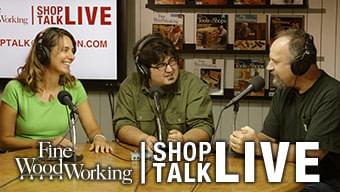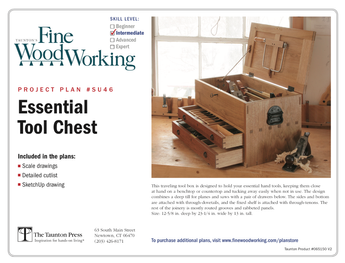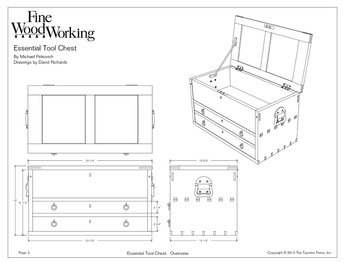Hello we spent a lot of money on our white oak beams. This is the result post sanding and painting. Carpentry company said this finish is normal with white oak beams. I feel is very blotchy. It does not look good. Per the pictures shared is this true?
Discussion Forum
Get It All!
UNLIMITED Membership is like taking a master class in woodworking for less than $10 a month.
Start Your Free TrialCategories
Discussion Forum
Digital Plans Library
Member exclusive! – Plans for everyone – from beginners to experts – right at your fingertips.
Highlights
-
Shape Your Skills
when you sign up for our emails
This site is protected by reCAPTCHA and the Google Privacy Policy and Terms of Service apply. -
 Shop Talk Live Podcast
Shop Talk Live Podcast -
 Our favorite articles and videos
Our favorite articles and videos -
E-Learning Courses from Fine Woodworking
-
-
 Fine Woodworking New England Event
Fine Woodworking New England Event -













Replies
Part 2
I agree that it does not look good. I can't say it is not naturally occuring, but I can say I would not have use those boards in a featured part of a project like a tabletop.
I completely agree.
Yikes. Did they screw up the sanding process?
I 100% think so as it didn’t look bad at all until sanding happened and then Matte coating was placed on it. Company is denying saying it’s normal for finish to be like that.
Just my thought, but the transition in color seems way too linear to be a naturally occurring process. I almost would have thought that the beams were exposed to the elements, with parts of it covered, thus causing these abrupt changes in color. However, this this only happened after sanding, that theory has less credence. It might be normal FOR THEM, but I have not experienced this type of finish variation in white oak. This is a showpiece in your house (and otherwise looks great).
I hope you can resolve this with your contractors. If not, over time you will probably stop noticing it, much like the glaring errors in my projects that 6 months later become un-noticeable...
Thank you so much for your insight and expertise.
From the pictures those boards appear to be finger joined, is that true? So different pieces of wood making up each board as opposed to each board being one consistent piece. I say this because those " blotches " are not random but appear to me to be mathematical. Or its possibly some type of veneered product. Ive seen a bunch of that. I dont know how they do it but they can and I have seen alot of even complicated moldings and such that were veneered. While you paid alot the price you paid would be multiples of that with solid boards. So yes, if that is the new industry standard then that color variation will also become "acceptable". You said "painted" I'm not seeing that in the pictures. Truly painted- like with paint there are ways to eliminate alot or even all of that . I'm suspecting that it's some kind of wash as opposed to actual paint -there by keeping the wood grain visible. You bought oak and if painted out you could have used something much cheaper like pine or poplar.
Most likely they used some type of water based product for the finish. Without a serious attempt at sealing- like with something like shellac and not using a shellac based or oil based wash you will get the type of bleed through that your seeing. If your painter was younger than 60 he probably doesnt know what " good" is! If I were doing that I would use a pigmented shellac for my wash and even at that I would cross my fingers and hope that I would get a continuous result and not to have to use so many coats to stop the bleeding that I would lose the wood look. Your in and out contractor looked at the end result and it looked good. The bleed out happened after he was out the door.
Thank you for your insight. I will ask t about the joining in my meeting tomorrow. Unfortunately the carpenter is the one who chose a painter and one he never used before to sand and add a matte finish to the woodwork. So this is fully on him and I couldn’t agree with you more that the person was not experienced. Thank you and keep you posted.
It looks like a form of "sticker shadow".
I’ve heard this term and when I looked at images I felt it too resembled this. Will review tomorrow and thank you for your feedback.
Finger jointed would not be commonly used on assemblies to be stained or clear finished such as oak, however I have seen it.
It's hard to tell from the photos but you should be able to easily identify it if so.
Whether finger jointed or staining from stacking and drying it would have been obvious after surfacing and before assembly and finish.
On the one cross piece is the book matched pieces going in opposite directions from the center. Seems pretty obvious that those boards are either joined or faced.
Do you know if the beams are solid white oak, or veneered? As
others have said there's pretty clearly a finger-type joint in one
of the beams. The color variation is quite regular, not really like
random blotching. You might consult an independent professional refinisher to see if the problem can be fixed.
Stop working with that contractor.
They should not have installed that without noticing and bringing it up first.
It makes you wonder what else has been deemed "normal" and not brought up to you.
Time for a new contractor and review before continuing.
If they decide to begin being honest, then still review everything before continuing.
That looks terrible and needs to be redone with proper materials for the application.
Those are not what anyone would expect them to be.
It looks like it's been stored improperly, leaving the light and dark areas. Which is weird and ugly.
I don't think it's finger-jointed. Zoom in, and you can see the would-be fingers aren't consistent. One does seem to be book-matched lengthwise, though, which is weird because it's the only one like that.
Again, they are either straight-up lying about it being "normal" or this actually is normal for them.
Neither of those options is acceptable, and in my opinion, both would equal firing.
To be honest when I first saw the pictures I thought it looked like the work of somebody who is inexperienced/under-trained in finishing. When sanding long pieces you often work your way along sanding what you can reach and then moving to a new spot (or moving the workpiece). If you lose track of what you have already hit, you’ll likely end up with inconsistent patches like what was pictured. If you watch home renovation shows you will observe that carpenters use orbital sanders quite differently than woodworkers—like a powered sanding block scrubbing along. And the same observation applies for brushing finish. Especially with waterborne clears, there’s so little color change that a novice could lose track of which spots are done and which are not.